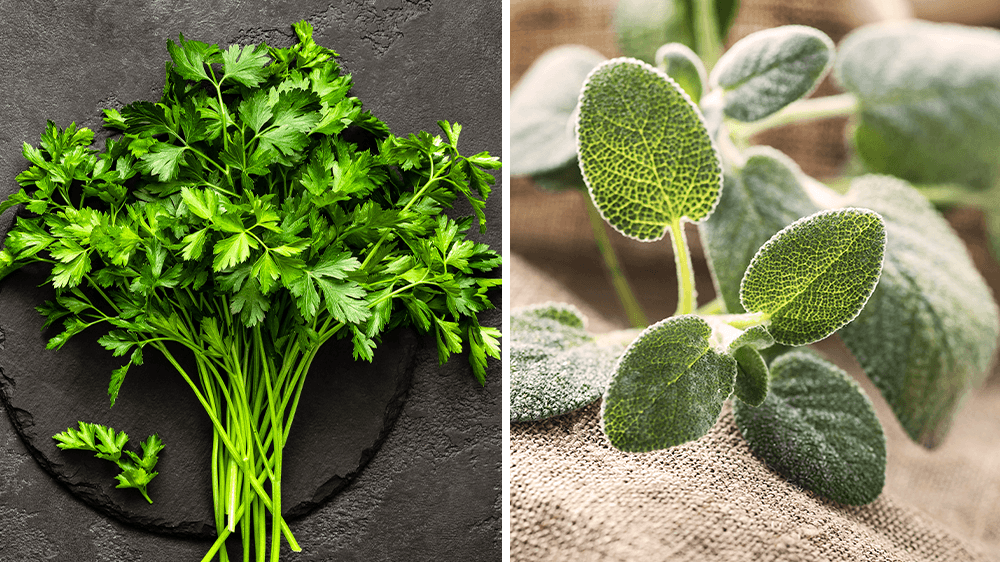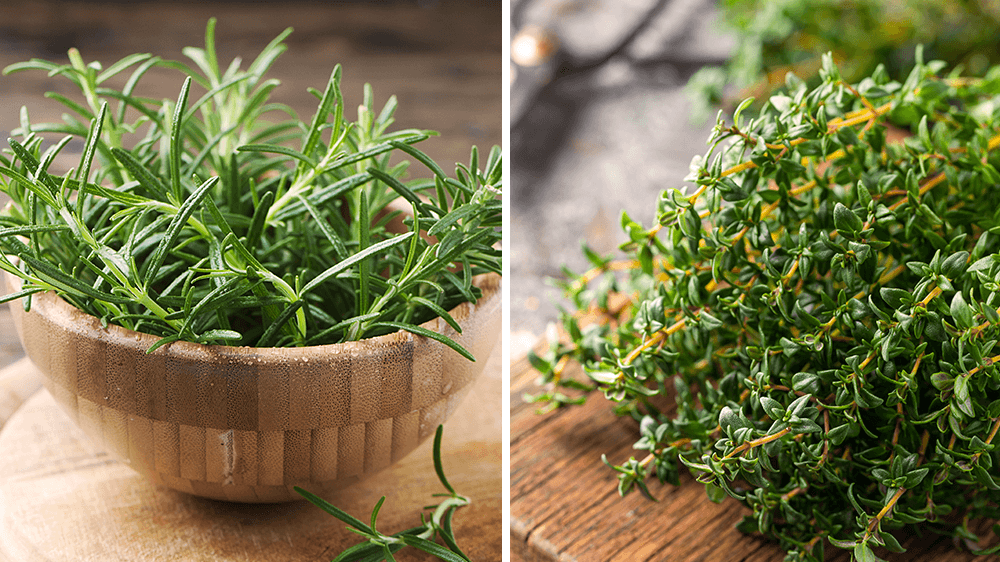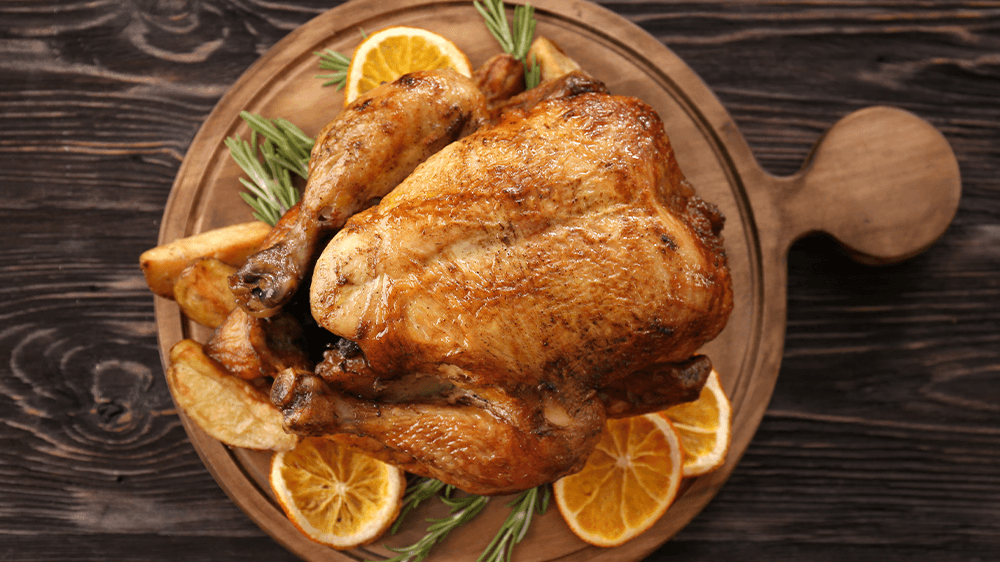The nostalgic, savory scent of a Thanksgiving turkey dinner is part of what makes this holiday so memorable and special. For the perfect traditional turkey dinner recipe just like grandma used to make, don’t reach for the old, dry spices in the back of your cupboard. You only need four different herbs to make a classic turkey rub, and they can all easily be grown fresh at home. Freshly picked herbs are so much more aromatic and flavorful—growing them in your garden or on your windowsill will elevate your cooking for holiday feasts and every meal after that!
What Herbs Do You Need for Thanksgiving?
If you’ve heard the song “Scarborough Fair,” these four homegrown herbs will probably sound familiar. They’ve long been considered the classic combination for poultry rub recipes, and that traditional recipe remains the best herb blend for Thanksgiving dinner.
Parsley
There’s a crisp, refreshing quality to parsley that’s both mild and invigorating, bringing a subtle kick to spice blends and emphasizing the complex flavors of the other herbs. It does best in full sun, so find a super sunny spot on a west- or south-facing windowsill if you’re growing it indoors. If you want to grow parsley outdoors, some folks recommend interspersing your parsley seeds with radish seeds. Parsley tends to germinate slowly, but radishes germinate quickly, so the radishes act as a marker, and you don’t lose track of where you planted your herbs.

Sage
Sage has such a soothing scent, and the flavor is so versatile! You can use it for so much more than just poultry rub. It’s great for autumn and winter dinner recipes using harvest vegetables like squash and pumpkin, with lots of creamy butter. Think, butternut squash ravioli with brown butter sauce and fried walnuts. Sage is also lovely in cocktails when paired with tart fruit flavors like mandarin orange and blackberry. It grows best in full sun, and it’s an excellent companion plant for rosemary—the next herb on our list!
Rosemary
On top of being delicious, this Mediterranean herb has major ornamental value, with attractive evergreen foliage. Growing it in decorative pots indoors is one of our favorite ways to decorate for the holidays. It’s like a miniature Christmas tree! However, if you grow it outdoors, rosemary plants can spread out quite wide and may reach up to 4 feet high. Rosemary likes full sun and loose, well-draining soil. Prune it regularly to harvest the tasty leaves, which will help the plant grow thick and bushy instead of leggy and floppy.

Thyme
The fourth and final garden edible that pulls this perfect poultry blend together is none other than thyme. This leafy herb is another ultra-versatile flavor that tastes incredible, whether it’s salty or sweetened. Use it in your savory Thanksgiving dishes, and use it in sweet, lemony syrups and glazes for pastries and desserts. It’s ideal for growing in containers—just ensure the soil has good drainage and the plant receives at least 6 hours of direct sunlight per day.

How to Use These Garden Herbs in Your Thanksgiving Turkey Recipe
If this is your first time taking over the duties of hosting Thanksgiving, rely on this foolproof garden herb blend for the Thanksgiving bird:
- ½ cup chopped parsley
- 1 tbsp chopped sage leaves
- 1 ½ tsp chopped thyme leaves
- 1 tbsp chopped rosemary + 4 extra sprigs
- 6–8 cloves chopped garlic
- Salt and pepper
Place the four rosemary sprigs inside the bird, along with two whole lemons poked all over with a fork. Combine the rest of the herbs in a mixing bowl with five tablespoons of olive oil. Voilà, your Thanksgiving poultry rub is ready!
You can use garden herbs for so much more than just a traditional Thanksgiving turkey dinner recipe. Visit Alsip Home & Nursery to get all the supplies you need to grow your own fully-stocked, self-replenishing spice rack! It’s easier than you think, and the results are mighty tasty!

